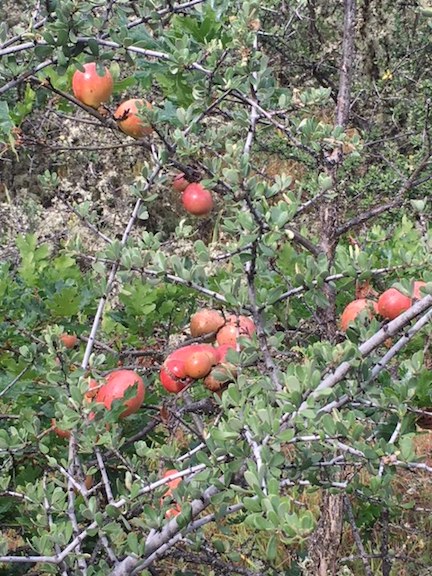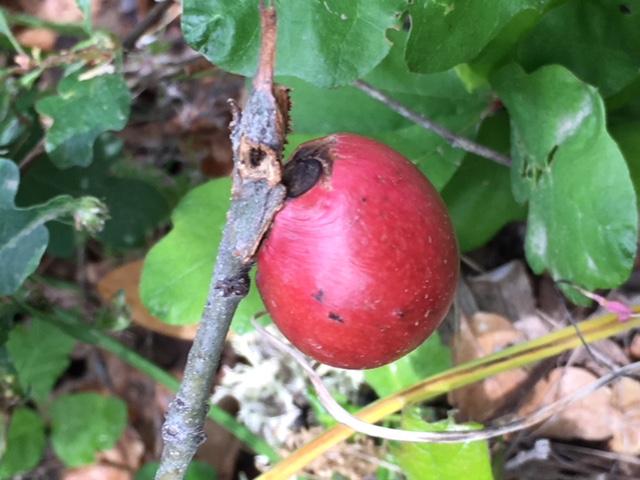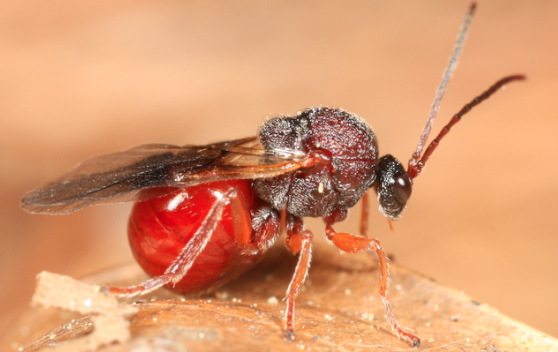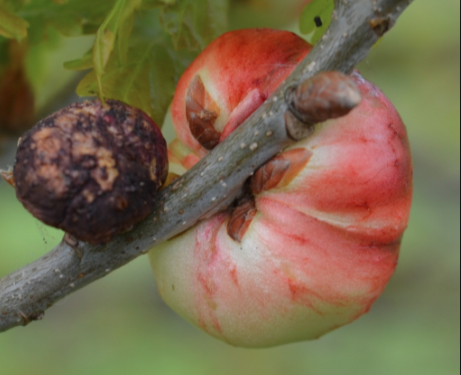My husband Jack and I were hiking in southern Oregon last week when we saw the most interesting sight. It looked like bright orange / red fruit growing on oak trees. I thought they were probably oak galls but I’d never seen a gall so large or so bright. I texted a picture to my friend who confirmed that, yes, these were fresh galls.

An oak gall is an interesting phenomenon. A female wasp from the Cynapid genus (that doesn’t sting!) lays her eggs in the twigs, branches or leaves of an oak tree. The tree tries to protect itself by growing tissue around the eggs and, in doing so, provides both cocoon and nutrition for the larvae that develop. The galls can house from one to several individuals. Different species of wasps use different species of oaks, resulting in a wide variety of galls. Some small ones look like bumps on leaves while the ones we were looking at were up to 4 or 5 inches across.

The larvae feed on the tissue surrounding them, pupate and eventually turn into an adult which drills a hole in the gall to escape. It takes about a year to make the journey from egg to adult. Once the wasp escapes, the galls dry, harden and turn brown.

But the usefulness of the galls has just begun when the wasp flies away. Galls are extremely high in tannic acids and have been mixed with iron sulfate to make an incredibly intense blue/black ink. This was the ink of choice from the 5th to the 19th century and many, many manuscripts from medieval times written with gall ink still exist today. This includes one of the oldest, most complete bibles.

You, too, can make your own gall ink. Take mature galls and crush them, soak that in water for 24 hours, then strain. Mix the resulting liquid with sulphate of iron (found at a gardening store) and a fixative of gum arabic (found at the grocery store) and you’ll have a beautiful ink that will last for centuries. Have fun!

Here’s a link to a short video explaining how oak gall ink was made in medieval times:
https://aleteia.org/2019/05/09/you-can-make-your-own-medieval-manuscript-heres-a-video-guide/
It is the second of seven videos put out by the British Museum on the making of manuscripts.
Oak gall ink
Thanks so much. Are you now going to make all your own ink?
My husband Jack and I also came across oak galls last weekend at the Limpy Botanical Park west of Grants Pass. The oak shrub looked just like the one in the photo above. Can you identify the exact variety of oak?
Well, in spite of our husbands’ shared name, it wasn’t a Jack Oak! My best guess is that it is a California Black Oak. Postings from both WildflowerSearch and Audubon Society indicate that this is the predominant oak species on this trail. Hope you had as lovely a hike as we did. What a beautiful country!